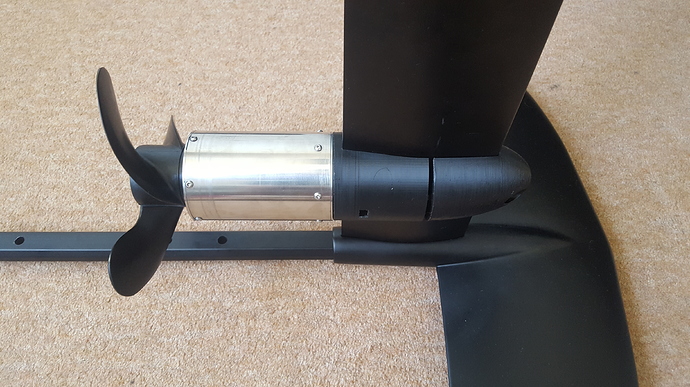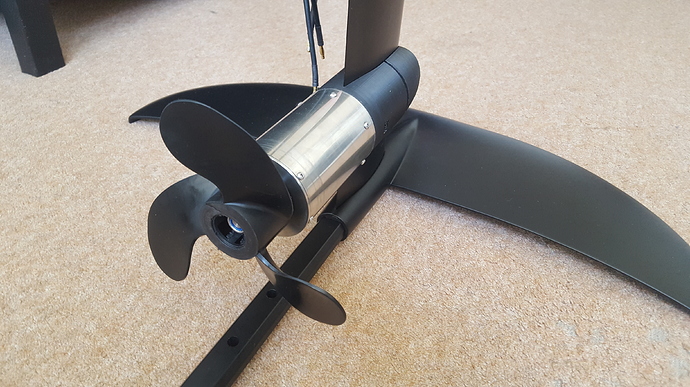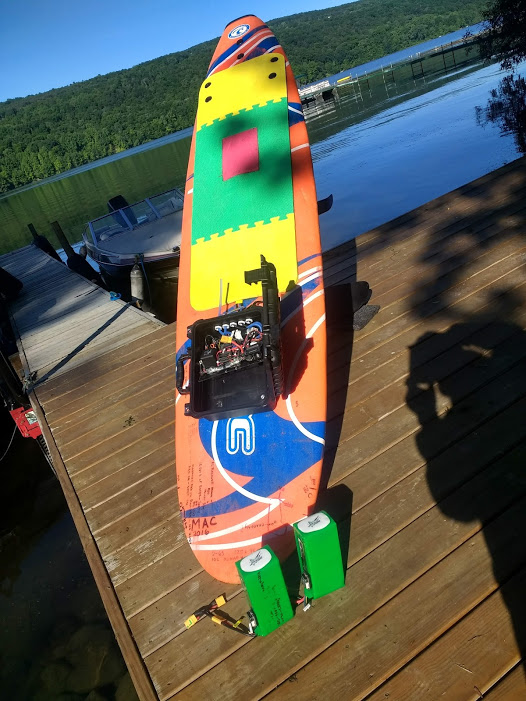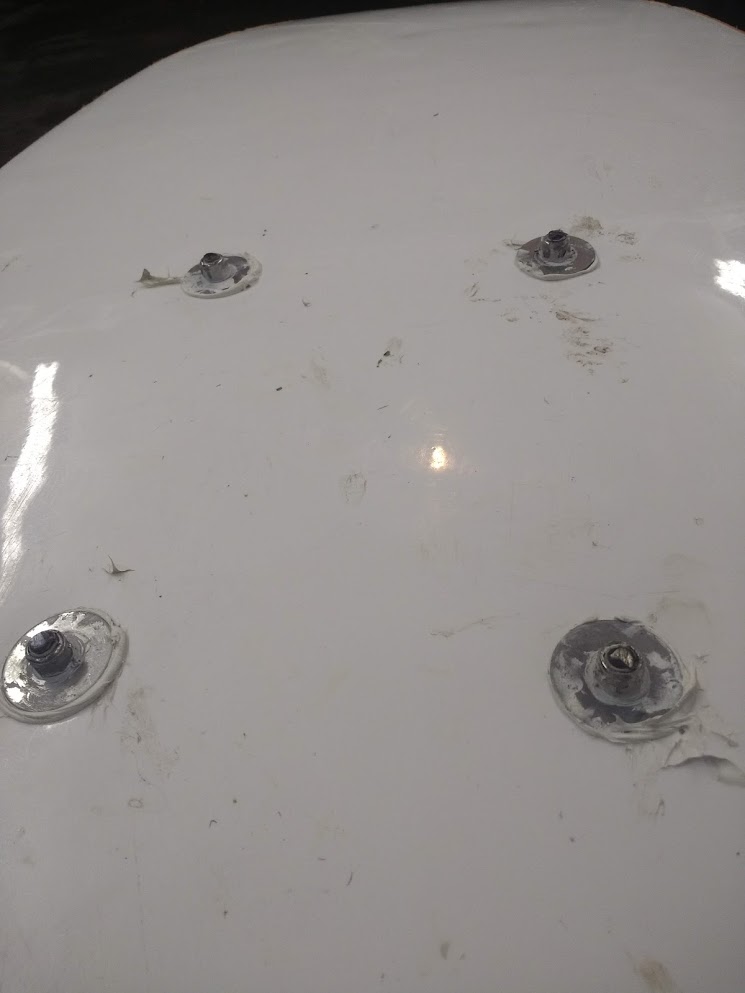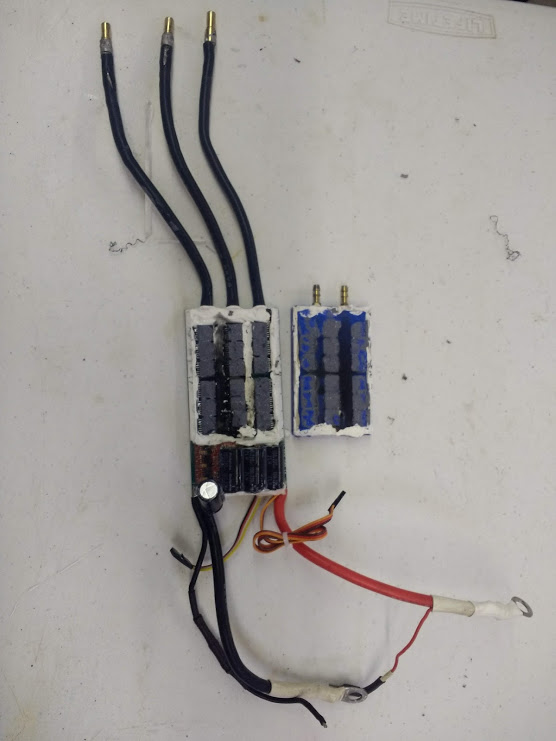wow, thanks for sharing Giga. This is right where I am…
I have an encapsulant coming for motor but also looking at
oil filing a small tube which could also be pumped to cool the
esc. Either way should work but want to keep it simple.
Finally, I have made quite a bit of progress since my last post. My foil is working OK. Sometimes it even still works at the end of my test ride. I am able to foil on my knees for almost a minute before falling off.
It is now ready for testing…
The big question is whether there will be enough heat dissipation through housing…
Today I manged to get to a standing position on the foil. I went for at least a minute.Most of that minute was slower than on foil speed. I am running a dry pod 83100 out runner, actually I have 10 ml of mineral oil in it. I have had no problems with motor heat.
I believe I do have a problem with my ESC getting to warm. When I fall after running hard for a few minutes. My safety lanyard kills the power to the ESC. The ESC will not restart until a couple minutes pass.
Nice setup! How have you secured the battery box to the board?
The battery box, has 4 nylon 1/4-20, 3/4" long bolts passing through it. I have automobile gasket sealer on the heads of those nylon bolts. Those nylon bolts screw in to steel 1/4"-20 coupling nuts on the out side of the box. The coupling nuts recess in to the urethane foam surfboard. Then I screwed steel all-thread into the coupling nuts with big washers and nuts. Its a little ugly but it has never given me any problems.
Here is my battery box. On my second day learning to ride it after about 30 mins I got into some weeds. I turned the board upside down to clean the weeds off the propeller. At that point one of my low voltage battery alarms started going off. So I slowly powered back to shore. When I got to shore the other battery alarm was going off. Turns out I had about a cup of water in the box, when I turned the board over the water got everywhere. Fortunately after sitting in the sun all day and shot with a leaf blower everything started working again.
Now I have added a way to add some air pressure inside the box before I leave. You can tell right away if you have a leak.
I am really curios how things work out with your motor selection. When I first heard about that motor I thought that looks a like the size of the motor Lift was using for their E-foil. I recall thinking that If you drove it with 14S ( thats what I heard Lift uses) it would put out 6500 watts ( thats what I heard Lift uses).
In a effort to get my ESC to run a little cooler I changed from a 6" pitch prop to a 5". When I went out to test it, the board was behaving strange. Vibration, did not want to lift off even at faster speed, sluggish. Within about 30 seconds the motor cut out, I was on my knees and was thrown over the nose of the board, jammed 2 of my fingers into the front of the board. Long story short, I had picked up a bunch of weeds on my prop and foil. That destroyed my 200 amp Flier ESC.
Sorry to hear that MAC, that really sucks!
Its a great learning lesson for us all thought if it does not feel right check the prop right away. I had a similar issue first day out with my thrust stopping dead, I flipped it up and the propeller was gone but I found it on the bay floor after 2 hours of snorkeling 
On an ESC note, long story short after confirming with a couple guys who know ESC’s very well, they all came to the same conclusion, and I see what they mean happening in this forum all the time with builders as ESC or wire connections meltdown.
Bottom line RC controllers are meant for short bursts for a car or boat to blast forward for 3-8 seconds and be out of sight before letting off on the throttle. With efoils, we draw full power for longer periods of time, and then still keep the power up at 50% when cruising which is a lot of current still. I was told whatever the ESC is rated for like your 200A flier is that you take 60% of 200 (.5*200 = 100A), that is your safe burst draw for long-term use so the motor should not draw more than that at peak, then take 60% of 100A which is 60A continuous and this should allow a long life on an ESC.
The reality is most of us are pushing ESCs way beyond their normal operating limits and the only way to resolve this is to use a smaller motor, or upsize the ESC so your motor is not straining the ESC ever ride or when weeds get stuck in it for only 30 seconds.
Hope this helps shed some light on ESC sizing for readers? 
I think I remember telling you that about a year ago.
I was reminded of the alien 420 amp esc being tested over on endless sphere by Luke. Blew up after a few seconds of 100amps.
One reason an ebike controller makes more sense, they have current control.
There is another video like this on the 300A swordfish ESC it did the exact same died in less than a minute as well with about 100A and they compared its AMPS (current) tracking that is built into the swordfish data logger and it was way off. Swordfish data logger said it was at 170+ amps but it died and fried at 100A.
This is why they are RC controllers and not used in human transport 
But just shows why so many smaller ESC’s like the 100A - 200A esc’s trying to be used for Efoiling burn out so quickly. More or less rate the ESC at 25% of rated current and use that as benchmark.
Thanks for sharing Dirkdiggler
Have anyone tried a simple ebike controller? 1-2kg extra are worth the simplicity of no forced cooling need. A simple 24 fet xiechang with IRF transistors will laugh about all you could possibly push into those tiny motors.
I was wanting to use directly in water, outrunner I have seen that problem with regard to direct motor salt water, I’m from Brazil here has Yes many many more distant Beach people will typically for freshwater, and closer anyway, I was wanting to use This setting I’m sorry if I’m talking nonsense I don’t know much more.
EMAX gt5345-170 kv-12s-RMP 6500-80a
ESC HobbyWing SeaKing V3 130A HV ESC BL Motor 6 V/5A BEC
Prob pa rev3 - pacificmeister
will be connected directly without gear box.
I ordered a replacement Flier ESC 380 AMPs. Delivery is scheduled for 4 to 5 weeks. Since I have time to wait I decided to open up my 83100 out runner to see how things looked. There is no sign of being cooked. My biggest fear has always been that there was no good way to keep a dry out runner cool. This is the motor I winded myself. Now its about 116 KV Delta. I am considering going to a Wye configuration to bring the current down farther, I am currently running a 12S.
, 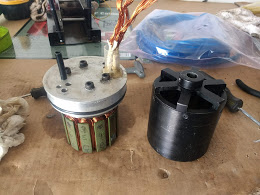
I plan to replace the large rear bearing, it has sounded rough since day 1. I also need to build a new Stainless Steel 12mm motor shaft because the shaft materisl I originally used is rusting. I run in fresh water only. No oceans near me.
I think I could have avoided burning up my ESC if I had a thermisister mounted inside my motor and possibly other spots. I am going to try to learn how to build a audible alarm that I can set to go off at safe temperature. Maybe a Ardirino project.
Have a look at titanium, not necessarily more expensive, but great corrosion resistance, easier to machine, and lighter… ![]()
I used that one to replace the shaft on my 80-100, ran it a few time in salty water and it’s as new…
it’s not exactly perfect machining but very easy… I put it in my drill press and used fine sandpaper to bring the diameter down for the bearing, and a metal handsaw to make the circlip groove ![]()
I use this one. I adjusted the beep alarm to 70 degrees @ESC. Works quite good.
DC 12V Red LED Digital Thermometer High Low Alarm -60~125C Temperature with Temp Probe Sensor B3950 10K Temperature Meter
http://s.aliexpress.com/iMBvuEfe
Thanks Mat, Unfortunately I just bought some ss shaft from E-bay minutes before I read your post. Everyday I learn something new I should have tried. I bet most of you guys are already planning your next build. I know I am.
